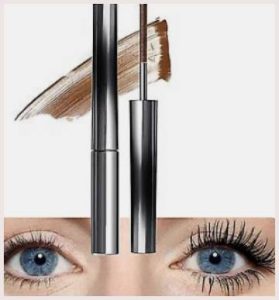I’ll be honest: I was tempted by the Mary Kay Instant Puffiness Reducer’s promise of banishing under-eye bags in minutes. Who wouldn’t want six hours of selfie-ready, baggage-free eyes? But after trying it and digging into user reviews, I’m not convinced it’s the miracle it claims to be. The hype sounds great—clinically shown to reduce puffiness, easy to use, and a Good Housekeeping Seal to boot. Yet, the reality? It’s a mixed bag. Let’s unpack my experience, the pros and cons, comparisons with other brands, and tips for using it (if you still want to try it).
My Personal Experience with Mary Kay Instant Puffiness Reducer
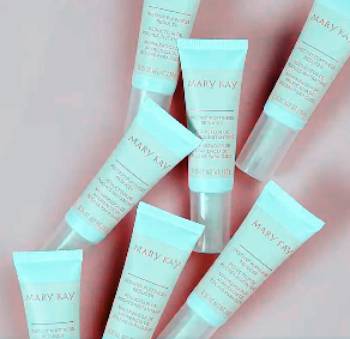
I’m no stranger to puffy eyes. Late nights, stress, and a love for salty snacks mean my under-eyes often look like they’re smuggling marshmallows. So, when I heard about Mary Kay’s Instant Puffiness Reducer, I was cautiously optimistic. The sleek tube arrived, and I followed the instructions: wash face, squeeze out a rice-grain-sized amount, and pat it under my eyes. The texture was odd—brown, pasty, and not at all creamy like I expected. It felt like spreading wet clay on my skin, and the light floral scent was pleasant but faintly irritating.
After patting it on, I limited facial expressions for a few minutes as it dried, per the instructions. The drying process was… weird. It tightened my skin, creating a matte, almost tape-like sensation. Did it reduce puffiness? Yes, slightly. My under-eye bags looked about 20% less pronounced, which was noticeable but not jaw-dropping. The effect lasted maybe four hours, not the promised six. But here’s the kicker: when I tried applying my usual concealer, it flaked off in patches, leaving my under-eyes looking cakey and worse than before. I tried again the next day, skipping makeup, and while the puffiness reduction was okay, my left eye watered like crazy, even though I avoided direct contact.
I gave it a week, experimenting with different application methods—less product, more product, applying it at night—but the results stayed underwhelming. The tight, adhesive-like feel never grew on me, and the flaking issue persisted. I wanted to love it, especially with its dermatologist-tested claims, but it felt like a temporary fix with too many quirks. User reviews echoed my frustrations: some loved the quick results, but others hated the texture and makeup incompatibility. For $35, I expected more.
Maintenance and Application Tips for Mary Kay Instant Puffiness Reducer
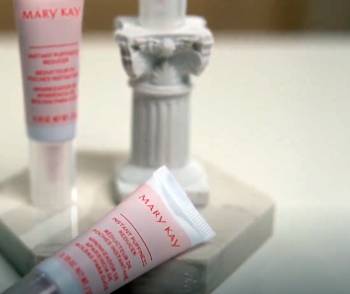
If you’re still curious about trying it, here’s how to make the most of it. These tips come from my trial-and-error and user reviews to help you avoid common pitfalls.
- Application Precision: Use a tiny amount—seriously, a rice grain per eye is enough. Squeeze it onto your fingertip, then lightly pat (don’t rub) it under your eyes, staying below the lash line to avoid irritation. Let it sit damp for 2-3 minutes, limiting facial expressions to prevent cracking. It fully sets in 15 minutes, so plan accordingly. Over-applying leads to residue and flaking, so less is more.
- Skincare Routine Adjustments: Apply it after washing your face, but skip eye cream or moisturizer in the under-eye area until it’s dry. Layering other products too soon makes it peel. If you must use makeup, wait 15 minutes, then gently tap on a small amount of concealer with a brush. Avoid heavy foundations—they’ll cake up. Remove it completely at night with a Mary Kay cleanser or oil-based makeup remover to prevent buildup.
- Storage and Product Care: Store the tube in a cool, dry place to prevent drying out (a common complaint). Check the product when it arrives; some users got empty or dried-up tubes, so contact the seller immediately if that happens. Use it within six months of opening for best results, as the formula can degrade over time.
- Managing Sensitivity: Test it on a small patch of skin first, especially if you have sensitive eyes. The floral scent or ingredients like sodium silicate might irritate. If your eyes water or you feel discomfort, wash it off and consult a dermatologist. Use it sparingly—once daily max—to avoid over-drying the delicate under-eye skin.
These steps can improve your experience, but they don’t fix the product’s core flaws. You’ll need patience and a minimal makeup routine to make it work.
Pros and Cons of Mary Kay Instant Puffiness Reducer
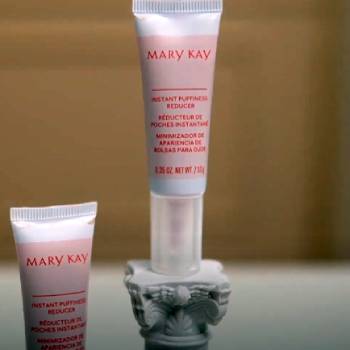
Pros:
Despite my gripes, the product has upsides worth noting. Here’s what stood out:
- Quick Results: Clinically shown to reduce puffiness by nearly 27% in 96% of users, it does deliver a noticeable (if modest) effect within 15 minutes. Perfect for a quick fix before a Zoom call.
- Long-Lasting Effect: The depuffing lasts up to six hours for some, though I got about four. Still, that’s enough for a morning or evening event.
- Dermatologist-Tested: Ophthalmologist-approved and tested for irritancy, it’s generally safe for sensitive skin, though my watery eye begs to differ.
- Innovative Formula: Uses sodium silicate, clays, and mica to draw out moisture and mattify the under-eye area, giving a smoother, toned look.
- Good Housekeeping Seal: Earned praise from the Good Housekeeping Research Institute, adding some credibility to its claims.
These perks make it appealing for those needing a fast, temporary solution. If you don’t wear makeup and can handle the texture, it might work for you.
Cons:
Now, let’s talk about why I’m not recommending it. The downsides are hard to ignore:
- Unpleasant Texture: The brown, chunky paste feels like wet cement and dries into an adhesive-like film that’s uncomfortable, like tape under your eyes.
- Makeup Incompatibility: Applying foundation or concealer over it causes flaking, making your under-eyes look cakey or patchy. You’re stuck choosing between puffiness reduction or makeup.
- Inconsistent Results: Some users, including me, saw only mild improvement, not the “magic” disappearance of bags promised. Effects vary widely.
- Potential Irritation: Despite being tested for allergies, it caused my eye to water and others reported rashes or sensitivity, possibly from the floral scent.
- Poor Value for Money: At $35 for a 0.35 oz tube, it’s pricey for a product with such limitations. Plus, some received dried-up or empty tubes, adding to the frustration.
These issues, especially the texture and makeup problems, make it a tough sell. If you’re looking for a seamless addition to your routine, this might disappoint.
Mary Kay Instant Puffiness Reducer Vs. Other Brands
To see how Mary Kay stacks up, I compared it to five other under-eye puffiness reducers. Each offers something different, so let’s break it down.
- Mary Kay Instant Puffiness Reducer Vs. RoC Multi Correxion 5-in-1 Eye Cream
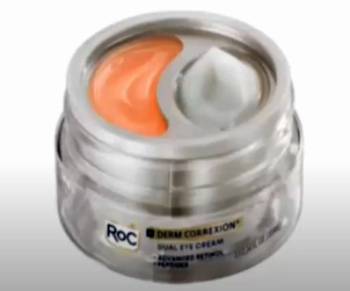
RoC’s eye cream is a powerhouse, tackling puffiness, dark circles, and wrinkles with shea butter and caffeine. It’s a creamy, hydrating formula that absorbs quickly, making it makeup-friendly—unlike Mary Kay’s flaky finish. In Good Housekeeping tests, it boosted firmness by 19% and hydration by 20%, outshining Mary Kay’s temporary fix.
At around $25 for 0.5 oz, it’s cheaper and more versatile for daily use. However, its effects build over time, not instantly, so it’s less ideal for quick fixes. If you want long-term benefits and makeup compatibility, RoC’s a better bet.
- Mary Kay Instant Puffiness Reducer Vs. SEAMANTIKA Puffiness Away Eye Cream
SEAMANTIKA’s eye cream, packed with Eyeliss and vitamin C, promises instant puffiness reduction and wrinkle smoothing. Its lightweight gel texture feels refreshing and layers well under makeup, avoiding Mary Kay’s adhesive feel. Users report visible results in minutes, lasting up to eight hours—longer than Mary Kay’s claim. Priced at $30 for 0.8 oz, it’s a better value. The downside? Some find the gel too sticky initially. Still, its hydrating formula and compatibility with other products make it a stronger choice for those seeking instant and lasting results without the hassle.
- Mary Kay Instant Puffiness Reducer Vs. Dermalogica Stress Positive Eye Lift
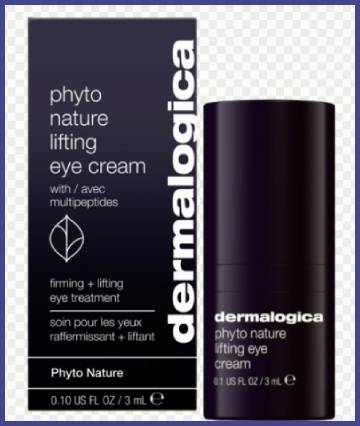
Dermalogica’s lightweight gel, infused with peptides and caffeine, is a morning lifesaver. It depuffs and brightens tired eyes almost instantly, with a cooling applicator that feels divine. Unlike Mary Kay, it’s makeup-friendly and doesn’t flake, blending seamlessly under concealer. Good Housekeeping praised its ability to smooth droopy lids, and users love the non-greasy finish. At $70 for 0.5 oz, it’s pricier, but the multi-tasking formula justifies the cost. If you want a luxurious, effective option without Mary Kay’s texture issues, Dermalogica delivers.
- Mary Kay Instant Puffiness Reducer Vs. Everliving Skin Instant Firming Eye Cream
Everliving’s eye cream offers temporary puffiness and wrinkle reduction, lasting up to eight hours. Its lightweight, non-greasy formula absorbs fast and works under makeup, unlike Mary Kay’s problematic paste. Users rave about its tightening effect, though some note mild stinging. Priced at $40 for 0.4 oz, it’s slightly more expensive but feels more polished. The downside? It’s less hydrating for dry skin. If you need a quick, makeup-compatible fix without the adhesive sensation, Everliving outperforms Mary Kay in ease of use and overall experience.
- Mary Kay Instant Puffiness Reducer Vs. Burt’s Bees Renewal Firming Eye Cream
Burt’s Bees uses plant extracts to depuff and firm, with Good Housekeeping tests showing 21% improved hydration and 18% increased firmness. Its rich, luxe texture is ideal for overnight use but takes time to absorb, unlike Mary Kay’s instant effect. At $20 for 0.5 oz, it’s budget-friendly and makeup-compatible, avoiding Mary Kay’s flaking. However, it’s slower to depuff, making it less ideal for quick fixes. If you prioritize long-term hydration and affordability over instant results, Burt’s Bees is a solid, user-friendly alternative.
Frequently Asked Questions (FAQs)
It works to an extent. Clinical studies show a 27% puffiness reduction in 96% of users, lasting up to six hours. In my experience, it reduced my under-eye bags slightly (about 20%), but the effect faded after four hours. Some users see better results, but others report minimal change or irritation. The adhesive-like feel and flaking with makeup limit its appeal. You might see a quick fix, but don’t expect miracles.
After washing your face, squeeze a rice-grain-sized amount per eye onto your finger. Lightly pat it under your eyes, avoiding the lash line. Leave it damp and limit facial expressions for 2-3 minutes while it dries. Wait 15 minutes for full effect before applying makeup (gently, to avoid flaking). Remove it at night with a cleanser. Use sparingly to prevent residue or irritation.
It depends on your needs. For instant results, Dermalogica Stress Positive Eye Lift stands out for its quick depuffing, makeup compatibility, and luxurious feel. For long-term benefits, RoC Multi Correxion 5-in-1 Eye Cream offers hydration and firmness at a budget price. SEAMANTIKA and Everliving are great for quick fixes, while Burt’s Bees excels for overnight care. Mary Kay lags due to texture and makeup issues.
Caffeine is a top ingredient for reducing puffiness, as it constricts blood vessels and reduces fluid buildup. Sodium silicate, used in Mary Kay, draws out moisture for a tightening effect. Peptides, found in Dermalogica and RoC, boost firmness, while vitamin C (in SEAMANTIKA) brightens and depuffs. Plant extracts, like those in Burt’s Bees, also help by soothing and hydrating the under-eye area.
Final Thoughts
After testing it and comparing it to others, I’m not sold on Mary Kay’s Instant Puffiness Reducer. The temporary puffiness reduction is nice, but the chunky texture, makeup incompatibility, and potential irritation outweigh the benefits. For $35, you deserve a product that fits seamlessly into your routine, not one that forces you to ditch your concealer or deal with flaking. Brands like RoC, SEAMANTIKA, or Dermalogica offer better value, versatility, and results. If you’re set on trying it, follow my tips and test it first—but I’d save my money for something less finicky.



